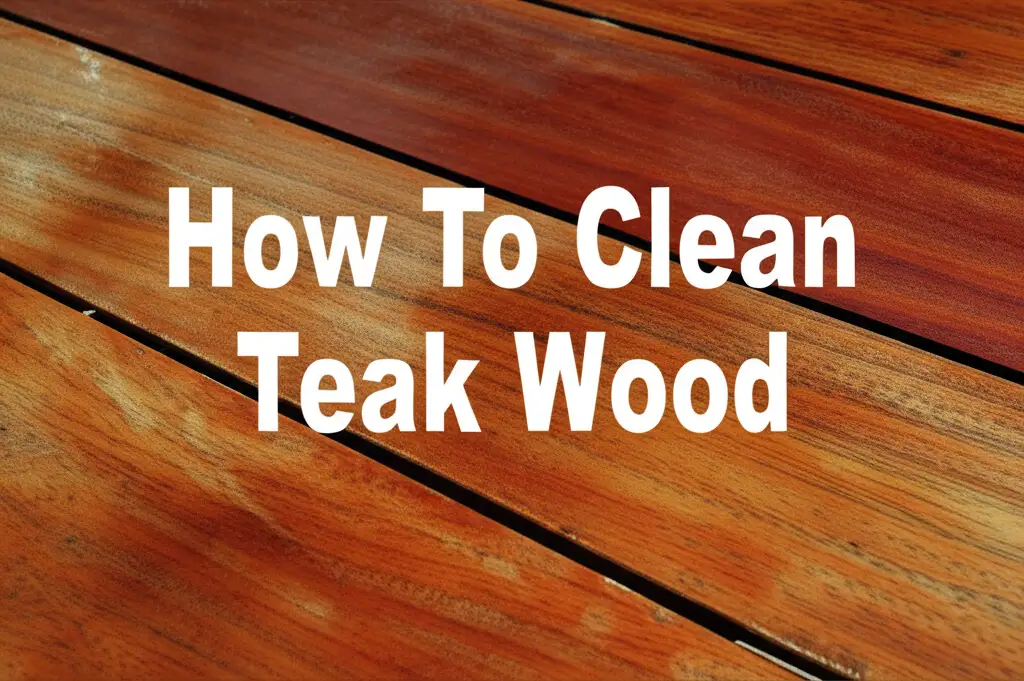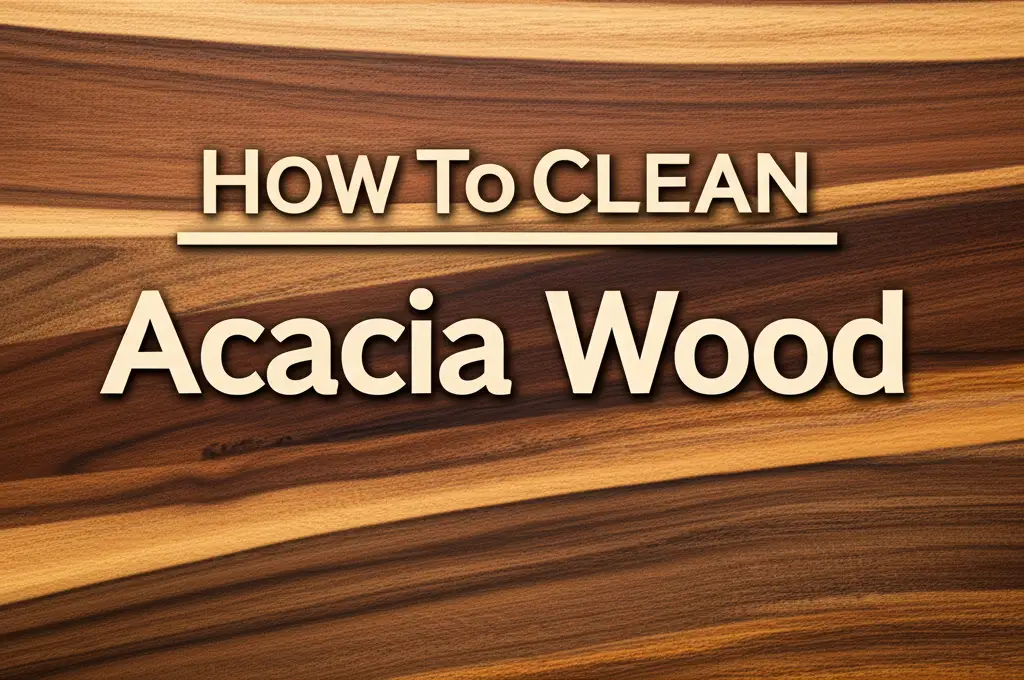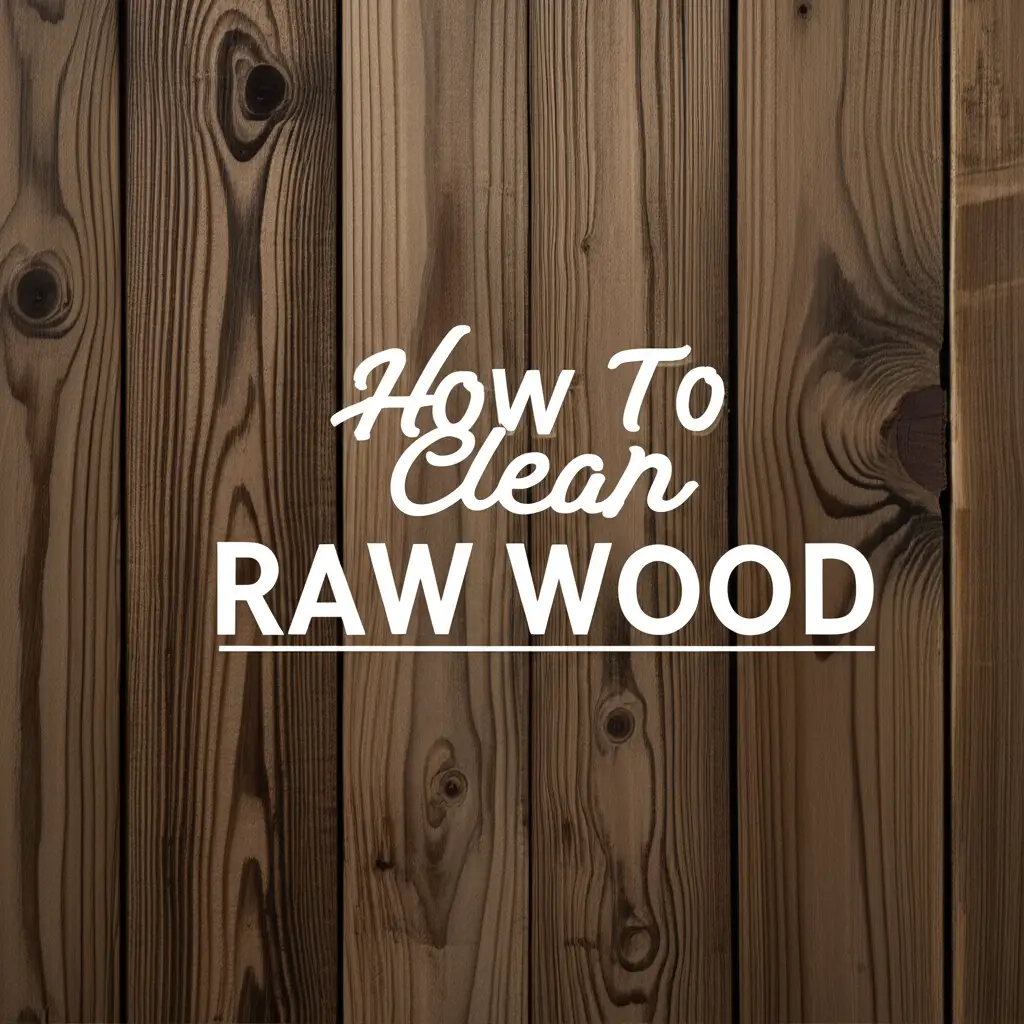· Wood Care · 16 min read
How To Clean Wood Before Staining

Clean Wood Before Staining: A Complete Guide
Have you ever wondered if you need to clean wood before staining? The answer is a clear yes. Cleaning wood before staining is a crucial step. It sets the foundation for a beautiful, long-lasting finish. Skipping this step can lead to a splotchy look. It can also cause the stain to peel or fade too fast. You want your wood projects to look their best. Preparing the surface properly ensures the stain absorbs evenly. This article will show you how to clean wood before staining. We cover tools, techniques, and common pitfalls. You will learn the exact steps to get your wood ready.
Takeaway:
- Properly clean wood surfaces before staining.
- Remove all dirt, grease, mold, and old finishes.
- Allow wood to dry completely before applying stain.
- This preparation ensures even stain absorption and a durable finish.
How do you clean wood before staining? To clean wood before staining, first remove loose debris. Then, use a wood cleaner or a mild detergent solution to wash the surface. Rinse the wood thoroughly and let it dry completely. For tough grime or old finishes, you might need to sand the wood.
Why Cleaning Wood Before Staining Matters
Cleaning wood before staining is not just an extra chore. It is a critical part of the staining process. A clean surface ensures the stain penetrates evenly. Dirt, grime, and old finishes create barriers. These barriers stop the stain from soaking into the wood fibers. When the stain cannot penetrate, it sits on the surface. This leads to an uneven color. It also makes the finish less durable.
Imagine painting a dirty wall. The paint will not stick well. It might flake off quickly. The same is true for wood stain. A clean surface allows the stain to bond properly. This creates a rich, consistent color. It also helps protect the wood from moisture and UV rays. A well-prepared surface lasts longer. It looks better for many years. Neglecting this step means your effort might be wasted. Your wood project deserves the best start.
Proper cleaning also helps identify issues. You might find hidden mold or water damage. Addressing these problems before staining is important. Staining over mold can trap it. This makes the problem worse. A thorough cleaning reveals these issues. You can then fix them before you apply any stain. This saves you time and money later. Taking the time to clean ensures a professional result. It makes the wood look its best.
Gathering Your Cleaning Arsenal
Before you start cleaning, you need the right tools. Having everything ready makes the job easier. It also ensures you clean effectively. You do not want to stop in the middle of the process. I always prepare my workspace first. This saves time and frustration. The right tools make a big difference in results.
Here is what you will need:
- Safety Gear: Always wear gloves and eye protection. Some cleaning solutions can irritate skin or eyes. A dust mask is good for sanding.
- Stiff Bristle Brush or Sponge: These are for scrubbing the wood surface. Choose one appropriate for the wood type. Soft brushes work for delicate wood. Stiffer ones are for outdoor decks.
- Bucket(s): You will need one for your cleaning solution and one for rinse water.
- Hose or Pressure Washer (Optional): A hose with a spray nozzle is good for rinsing. A pressure washer can be useful for large outdoor surfaces like decks or fences. Be careful with pressure washers. Too much pressure can damage wood fibers.
- Wood Cleaner or Mild Detergent: Specific wood cleaners are effective. You can also use a mixture of mild dish soap and warm water. For mold, a bleach solution might be needed.
- Clean Rags or Towels: These are for wiping and drying the wood.
- Sander (Optional, but Recommended): An orbital sander or sanding block is useful. You might need to sand for very stubborn stains. Sanding also helps open wood pores. This allows better stain absorption.
- Vacuum or Shop Vac: To remove sanding dust or loose debris.
- Tarps or Plastic Sheeting: To protect surrounding areas from cleaning solutions.
Having these items ready helps the cleaning process run smoothly. Each tool plays a role in getting the wood perfectly clean. Do not skip any item if you want the best outcome. Proper preparation leads to successful staining.
Step-by-Step Guide to Cleaning Wood Surfaces
Cleaning wood before staining involves several steps. Each step builds on the last. Following them ensures a truly clean surface. I always approach this process systematically. It helps me achieve the best results. This guide covers general cleaning for various situations.
Initial Inspection and Debris Removal
Start by looking at the wood closely. What kind of dirt is on it? Is it just dust, or is there grime, mold, or old paint? Knowing this helps you choose the right cleaning method. Remove any loose dirt, leaves, or debris. You can use a broom, a shop vac, or a vacuum cleaner. For outdoor wood, a leaf blower works well. This step prevents small particles from scratching the wood during washing. It also makes the next steps more efficient.
Gentle Cleaning for Light Dirt
For wood with light dust or minimal dirt, a simple cleaning solution works. Mix a few drops of mild dish soap with warm water in a bucket. Dampen a soft cloth or sponge with this solution. Wipe down the wood surface. Do not saturate the wood. You just want to make it damp. Wipe in the direction of the wood grain. This helps lift dirt from the natural lines of the wood. Rinse the cloth often in clean water. Wring it out well before wiping again. This prevents spreading dirt around. Finish by wiping with a clean, damp cloth. Then, dry with a clean towel. This method is good for indoor furniture or lightly soiled wood.
Deep Cleaning for Stubborn Grime
Sometimes wood has deep-set dirt or grime. For this, you need a stronger approach. Use a dedicated wood cleaner. Follow the product instructions carefully. Many wood cleaners require mixing with water. Apply the solution with a stiff-bristle brush or sponge. Scrub the wood surface firmly. Work in small sections. This ensures you cover all areas. Rinse thoroughly with clean water. For large outdoor surfaces like a deck, you might use a hose. Be sure to remove all cleaner residue. Any leftover cleaner can affect stain absorption. This deep cleaning helps lift embedded dirt. It prepares the wood for a new finish. You can learn more about general wood stain removal here: How To Clean Stains On Wood.
Addressing Mold and Mildew
Mold and mildew are common problems, especially on outdoor wood or in damp areas. They appear as black, green, or fuzzy spots. You must remove them completely before staining. Staining over mold traps it. This can lead to future problems. Mix one part bleach with three parts water in a bucket. Wear gloves and eye protection. Apply this solution to the moldy areas. Let it sit for 15-20 minutes. Scrub the areas with a stiff brush. You will see the mold disappear. Rinse the wood thoroughly with clean water. Make sure no bleach solution remains. Bleach can lighten wood if left too long. For severe mold issues, consider using a specialized mold remover. Getting rid of mold is key for a healthy wood surface. You can find detailed steps on handling mold here: How To Clean Black Mold Off Wood.
Dealing with Grease and Oil Stains
Grease and oil stains can be tough to remove. They repel stain, causing patchy results. For small grease spots, a degreaser works well. Apply a small amount of mineral spirits or denatured alcohol to a clean cloth. Dab the stain. Do not rub, as this can spread the grease. Blot until the stain lifts. For larger areas or deep grease, you might need a poultice. Mix an absorbent material like sawdust or fuller’s earth with a solvent. Apply the paste to the stain. Cover it and let it sit overnight. The paste will absorb the grease. Scrape off the dried paste. Clean the area with a wood cleaner. This method pulls the oil out of the wood. It ensures your surface is ready for staining. If you are cleaning a deck, specific steps for this process are outlined here: How To Clean Deck Before Staining.
Special Considerations for Different Wood Types
Not all wood is the same. Different types of wood react differently to cleaning. Understanding these differences helps you choose the best method. This ensures you do not damage the wood. My approach changes based on the wood I am working with.
Pressure-Treated Wood
Pressure-treated wood is common for decks and fences. This wood has chemicals forced into it. These chemicals protect it from rot and insects. However, new pressure-treated wood often has a green tint. It also feels damp. You must let it dry completely before cleaning and staining. This can take several weeks or months. Cleaning new pressure-treated wood involves washing off dirt and mildew. Use a specialized deck cleaner or a simple soap and water solution. Rinse thoroughly. For older pressure-treated wood, check for mold or algae. Clean these with a bleach solution or a dedicated cleaner. Be gentle with pressure washers on this type of wood. Too much pressure can damage the soft outer fibers. Prepare this wood carefully for the best stain adhesion. For detailed cleaning steps for this material, see How To Clean Pressure Treated Wood.
Hardwoods (Oak, Maple, Cherry)
Hardwoods are dense and durable. They are less prone to deep scratches. However, they can still collect dirt and grime. For indoor hardwood furniture or floors, use a gentle approach. A damp cloth with mild soap is often enough. Avoid excessive water. Hardwoods can swell or warp if they get too wet. For stubborn spots, a wood cleaner designed for hardwoods is best. Always test cleaners in an inconspicuous area first. This checks for discoloration. Sanding is often needed to open the pores. This helps the stain penetrate. Be careful not to sand too aggressively. Hardwoods show sanding marks easily.
Softwoods (Pine, Cedar, Fir)
Softwoods are more porous. They absorb cleaners and stains quickly. This means they are also more prone to water damage. Use less water when cleaning softwoods. A quick wipe-down with a damp cloth is usually best for light cleaning. For deeper cleaning, use wood cleaner sparingly. Rinse quickly. Softwoods can show water spots. They also absorb mold more easily. Address mold promptly with a bleach solution. Be extra careful when scrubbing softwoods. They can dent or splinter more easily than hardwoods. Sanding softwoods needs a light touch. They can scratch deeply. Sanding also raises the grain. This makes the wood feel rough. You might need to do a final light sanding after cleaning.
The Importance of Drying and Final Preparation
Cleaning is only half the battle. Allowing the wood to dry completely is just as important. Skipping this step can ruin your staining efforts. Stain applied to wet wood will not adhere properly. It can bubble, peel, or look cloudy. I always emphasize patience at this stage. It makes all the difference.
Proper Drying Techniques
After cleaning, the wood needs time to dry. For outdoor wood, this means good weather. Sunlight and airflow help speed up drying. Aim for at least 24-48 hours of dry weather. More humid conditions require longer drying times. You can use a moisture meter to check the wood’s moisture content. Wood should be below 15% moisture for best staining results. For indoor wood, use fans or dehumidifiers. Ensure good ventilation in the room. Do not rush this step. A dry surface is vital for stain absorption. It prevents future problems.
Light Sanding for Optimal Stain Absorption
Once the wood is completely dry, a light sanding is often necessary. This step achieves two things. First, it smooths out any raised wood grain. Water from cleaning can cause the grain to lift. Second, sanding opens up the wood’s pores. This allows the stain to penetrate deeply and evenly. Use fine-grit sandpaper, like 180-220 grit. Sand in the direction of the wood grain. Do not press too hard. Just a light pass is enough. After sanding, remove all dust. You can use a shop vacuum or a tack cloth. A lint-free cloth works too. Dust is a barrier to stain. It can also create an uneven finish. Cleaning after sanding is very important. Find more information on that process here: How To Clean Wood After Sanding Before Painting.
Final Inspection
Before applying stain, take one last look. Is the surface clean? Is it smooth? Are there any remaining spots or dust? Address any issues now. This is your last chance to prepare the wood perfectly. A final wipe with a tack cloth ensures all dust is gone. Your wood is now ready for staining. This final check prevents surprises after the stain is applied. It ensures a professional-looking finish.
Common Mistakes to Avoid When Cleaning Wood
Cleaning wood seems simple. Yet, many people make mistakes. These errors can lead to poor stain results. I have seen these problems many times. Knowing what to avoid saves you time and effort. It helps you achieve a perfect finish.
Using Too Much Water
One common mistake is using too much water. Wood is absorbent. Excessive water can cause wood to swell or warp. It can also raise the wood grain severely. This makes the surface rough. For indoor furniture, water can damage joints or finishes. Always use a damp cloth, not a soaking wet one. For outdoor wood, try to control the amount of water. A gentle rinse is often enough. Let the wood dry completely before moving on. Too much moisture is a leading cause of staining problems.
Not Rinsing Thoroughly
Another mistake is leaving cleaner residue on the wood. Cleaners contain chemicals. These chemicals can react with the stain. This results in splotchy areas or poor adhesion. Always rinse the wood thoroughly after cleaning. Use clean water. For outdoor surfaces, a hose works well. For indoor items, use multiple passes with a clean, damp cloth. Make sure all soap or chemical residue is gone. A clean surface holds stain best. If you’ve used something like Citristrip, ensure no residue remains: How To Clean Citristrip From Wood.
Skipping the Drying Step
Patience is key. Many people rush the drying process. Staining wood that is still wet is a major error. Moisture trapped under the stain can cause it to peel. It can also lead to mold growth. Always allow wood to dry completely. This might take days, especially outdoors. Use a moisture meter to be sure. A dry surface is crucial for proper stain penetration and adhesion.
Using Harsh Chemicals Without Testing
Some stains require strong cleaners. However, using harsh chemicals blindly can damage wood. Bleach can lighten some wood types. Strong acids can etch wood fibers. Always test any strong cleaner in a small, hidden area. This checks for adverse reactions. Read product labels carefully. Choose cleaners appropriate for your wood type and the type of dirt. Start with the mildest cleaning method first. Increase strength only if necessary.
Neglecting to Remove All Dust After Sanding
Sanding creates dust. This dust, even fine particles, will act as a barrier to the stain. It prevents proper absorption. Always remove all sanding dust. Use a shop vacuum, then follow with a tack cloth or a slightly damp cloth. Pay close attention to corners and crevices. Any remaining dust will show up as specks under the stain. It will ruin the smooth finish. This step ensures a truly clean canvas for your stain. If you are cleaning an antique wood piece, knowing how to handle it properly helps: How To Clean Mildew Off Antique Wood Furniture.
FAQ Section
How long does wood need to dry after cleaning before staining?
Wood needs at least 24-48 hours to dry after cleaning. This time can be longer in humid conditions. Use a moisture meter to ensure the wood’s moisture content is below 15%. Rushing this step can lead to poor stain adhesion and a blotchy finish.
Can I use a pressure washer to clean wood before staining?
Yes, you can use a pressure washer for large outdoor wood surfaces like decks or fences. However, use low pressure (under 1200 PSI) and keep the nozzle moving. Too much pressure can damage wood fibers, causing splintering or fuzziness. Test in an inconspicuous area first.
Do I need to sand wood after cleaning and before staining?
Yes, a light sanding with fine-grit sandpaper (180-220 grit) is highly recommended. Sanding smooths any raised grain from cleaning. It also opens the wood pores, allowing the stain to penetrate deeply and evenly. Always remove all dust after sanding.
What should I do if I find mold on my wood before staining?
For mold, mix one part bleach with three parts water. Apply the solution, let it sit for 15-20 minutes, then scrub with a stiff brush. Rinse thoroughly with clean water. Ensure all mold is gone before proceeding. Bleach can lighten wood, so test it first.
Can I use household cleaners like dish soap to clean wood?
For light dirt, a mild dish soap solution (a few drops in warm water) can work. For tougher grime, a dedicated wood cleaner is better. Avoid abrasive cleaners or those with strong chemicals. Always rinse well to prevent residue.
How do I remove grease or oil stains from wood before staining?
For grease and oil, mineral spirits or denatured alcohol on a clean cloth can blot out small stains. For larger or deeper stains, a poultice made from an absorbent material mixed with a solvent can draw out the oil. Clean the area thoroughly afterward.
Conclusion
Cleaning wood before staining is a non-negotiable step for any successful project. It directly impacts how your wood looks and how long it lasts. By following the steps I have outlined, you prepare your wood for a perfect finish. This means removing dirt, grime, mold, and old finishes. It also includes proper drying and a final light sanding.
Remember, a clean, dry, and smooth surface is essential. It allows the stain to absorb evenly. This gives you that rich, consistent color you want. It also protects your wood for years to come. Do not rush any part of this process. Patience now means beautiful results later. Your wood project deserves this careful preparation. Get ready to transform your wood with a stunning, professional-grade stain. Start cleaning today, and enjoy the lasting beauty of your stained wood!
- wood preparation
- wood staining tips
- wood cleaning
- DIY wood care
- surface preparation




